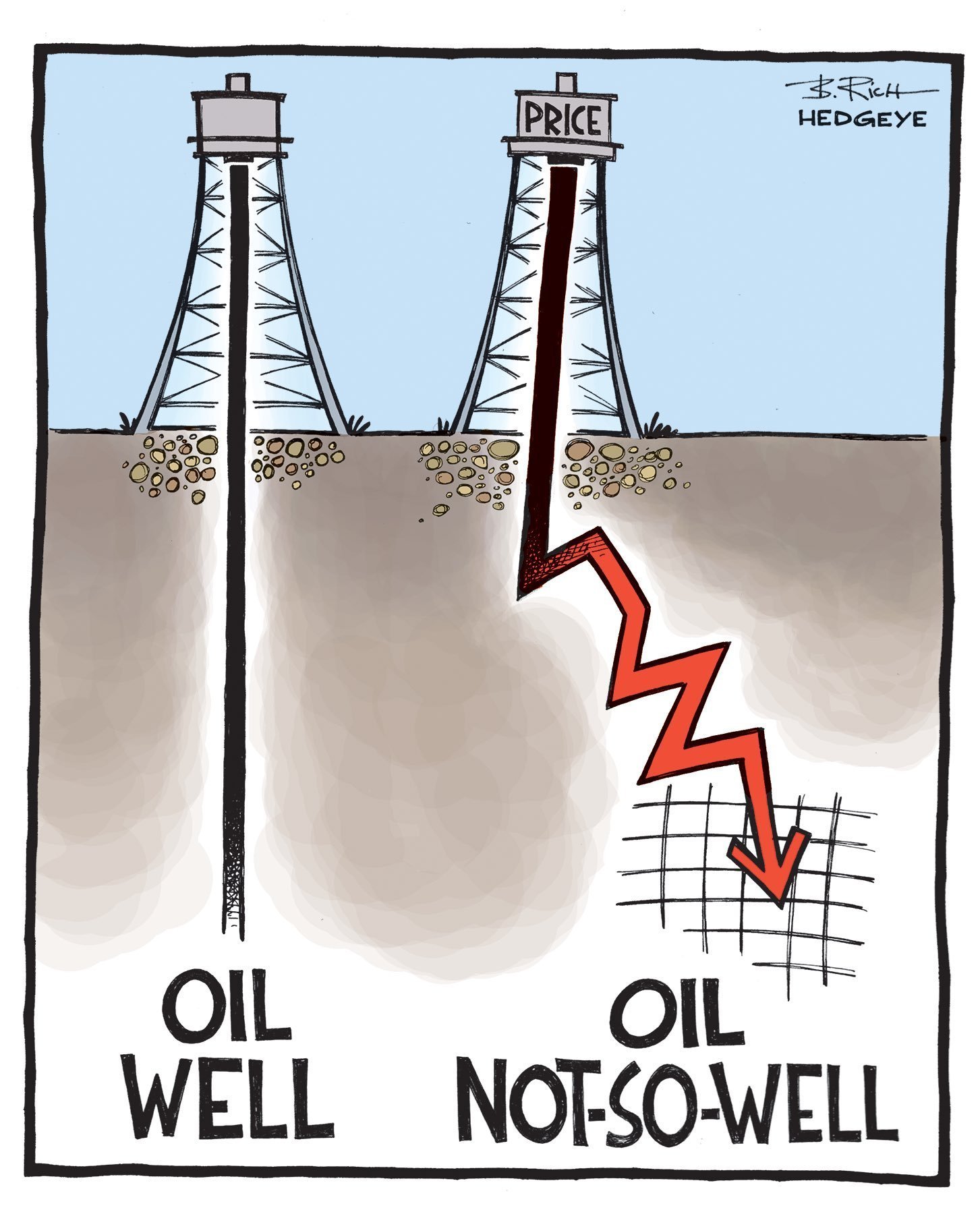On the 20th of April 2020, the US oil price crashed to well below zero. Whoever buys oil 🛢️ in America in May will receive money! This has never been seen before – the analysts are perplexed! In this (long) post, we take a closer look at the backgrounds, risks and opportunities of this crash.
It is no surprise that the oil industry has been facing a major crisis for years. In this recent report from CIEL, the authors describe how Covid-19 accelerates the collapse a bit, but mostly highlight the systematic weaknesses in the oil and gas sector. Especially the accumulation of debts is a very important factor in this. The oil sector relies on capital markets and other financial sector actors to support their activities. The report refers to another report from the Institute for Energy Economics and Financial Analysis that shows that most of the largest oil and gas companies in the world have not been making enough profit from their primary business for at least since 2010 – the sale of oil and gas and petrochemicals – to cover profit payments to their shareholders.
In recent years, oil companies have spent more on profit distributions than they have earned! To keep this in balance (and to keep the shareholders happy), companies use different strategies, namely: adjusting profit distributions (among other things by buying back shares), selling property and lots of loans!
So far about the financially unhealthy and economically unfeasible system. Covid-19 has ensured that we no longer fly and move much less. According to CIEL, transportation uses about 70% of all petroleum products. Due to the pandemic, restrictions have been in place since February to fly to China, there were 63% fewer flights at the end of March than in 2019, and the cruise ships are stationary. In addition, Rystad Energy estimates, about 3 billion people were quarantained, so there was much less commuting between home and work. Finally, we also had a warm winter (although due to climate change). It is estimated that oil consumption will be 6% lower in 2020 than in 2019. In other words, demand has fallen, there was already quite a lot of oil in stock (due to the warm winter), but production levels have not yet been slowed down. So there is much more supply than demand, which leads to full storage capacity. The OPEC + countries have come to an agreement to produce 10 million barrels less per day, but this does not seem enough to rebalance global supply. CIEL predicted the negative oil prices that have now become reality: because a negative price is still cheaper than throwing the oil away!
What is also important is that this will have an effect on countries in the South. Oil-dependent economies such as Nigeria are in danger of collapse and planned investments in Guyana (by ExxonMobil in the Stabroek offshore block) and Argentina (by YPF in Vaca Muerta) are being called into question. While declining production levels are of course good for the climate (and activists in these areas will also be very happy with this result), it remains essential that this must be done in a controlled manner and that it cannot go without reparations to affected communities!
Another risk of crashing companies is the cessation of necessary maintenance, with all associated environmental and human rights risks. In fact, companies may set their own worthless oil on fire.
So this is all pretty negative, but there is also positive news: nationalization has never been cheaper! More on that in this discussion article.
Let’s go! ✊✊
Here you can read what we previously wrote about Shell and the oil crisis and the nationalization of Shell.

